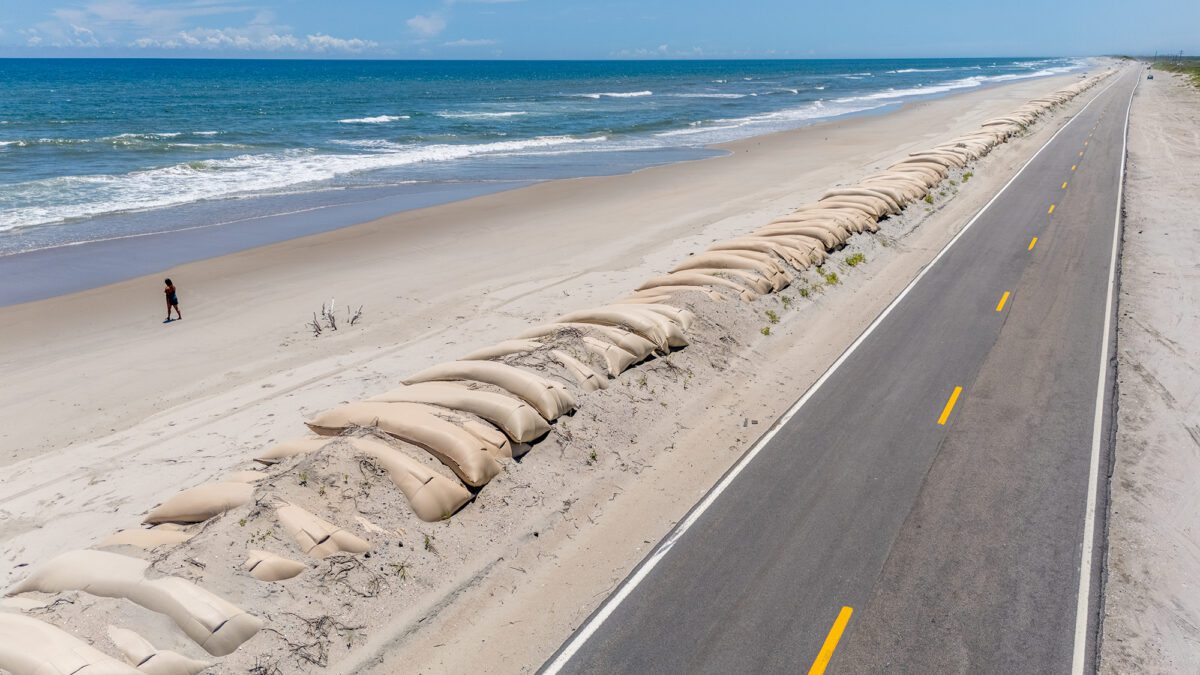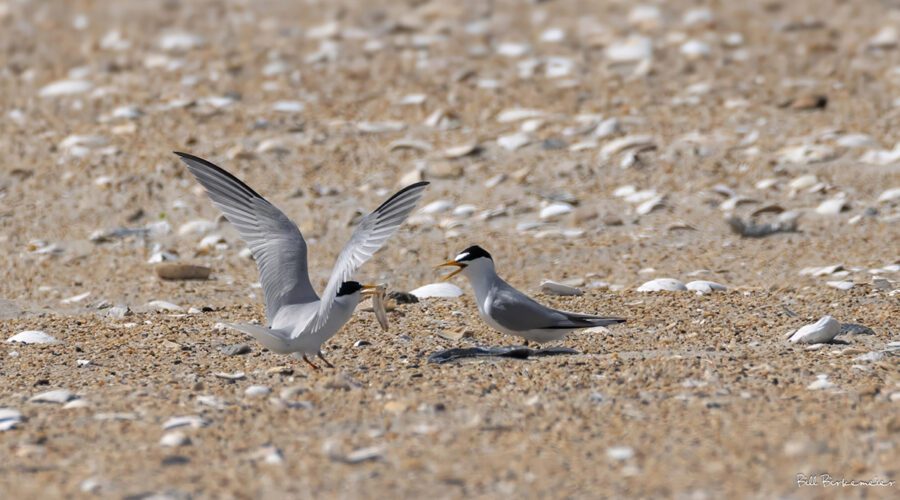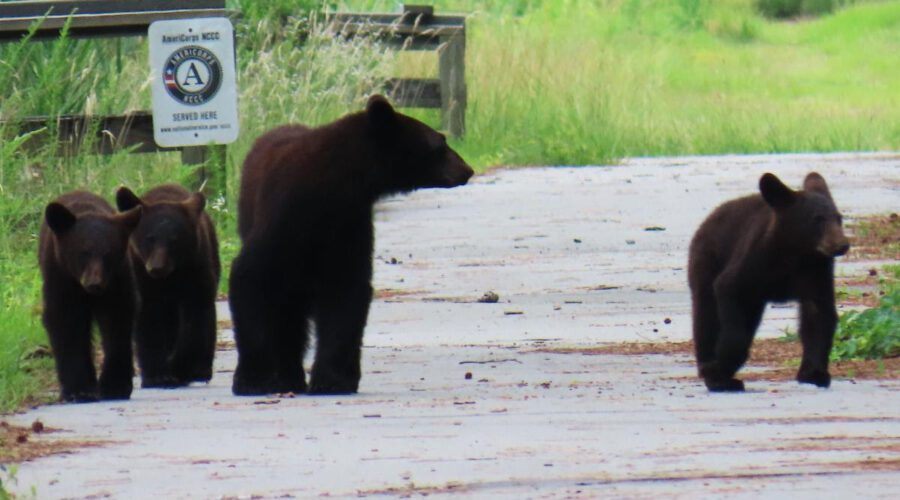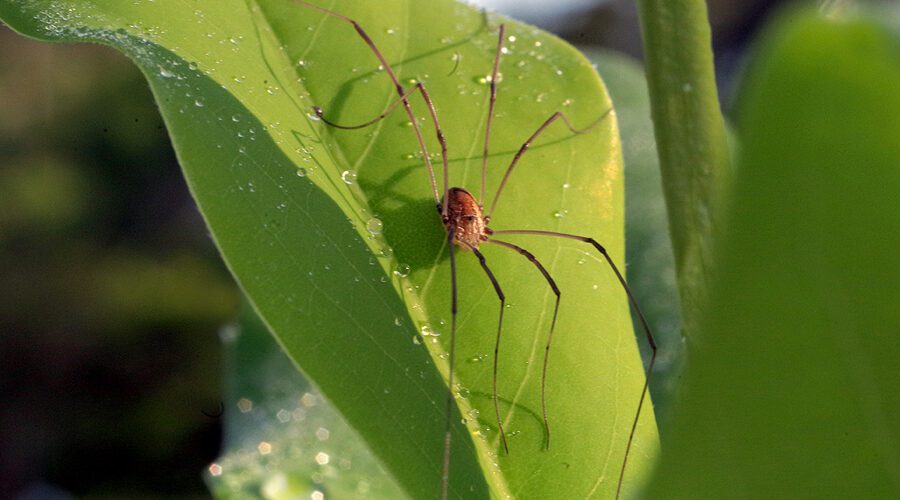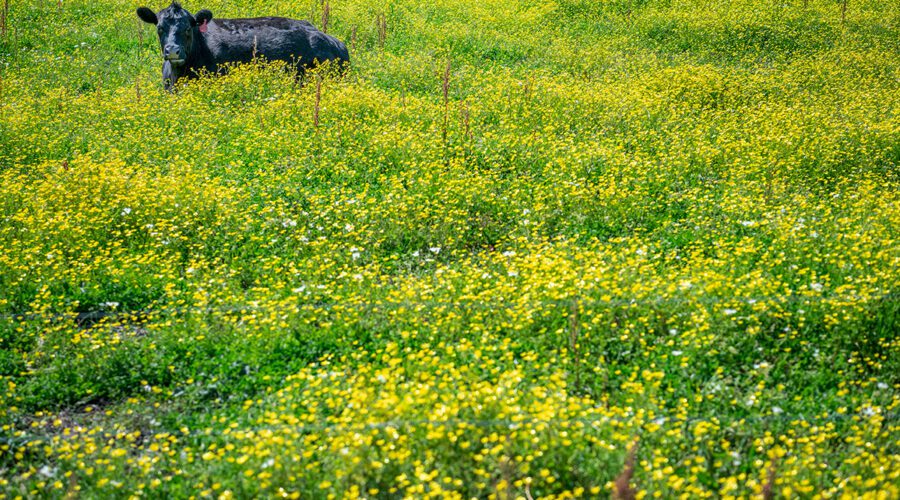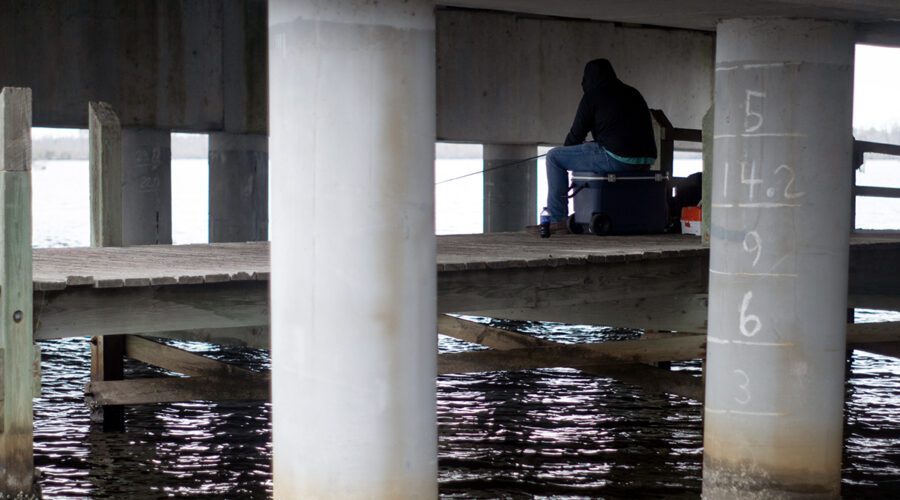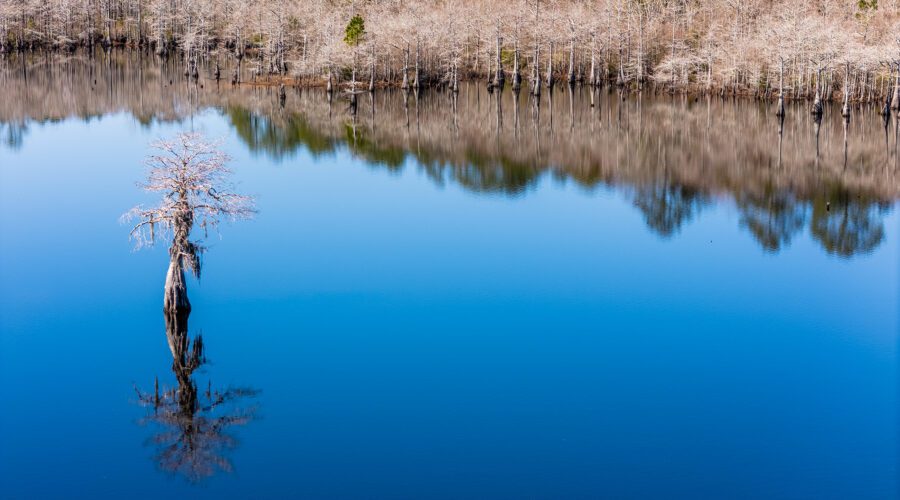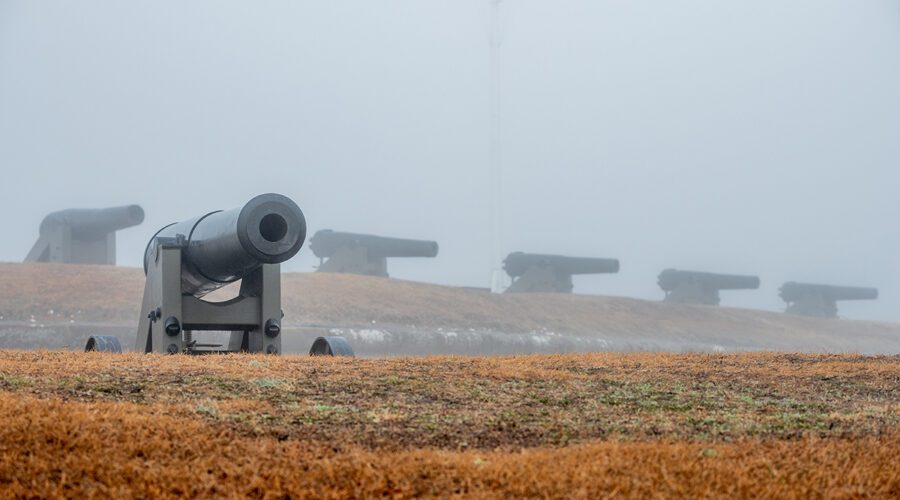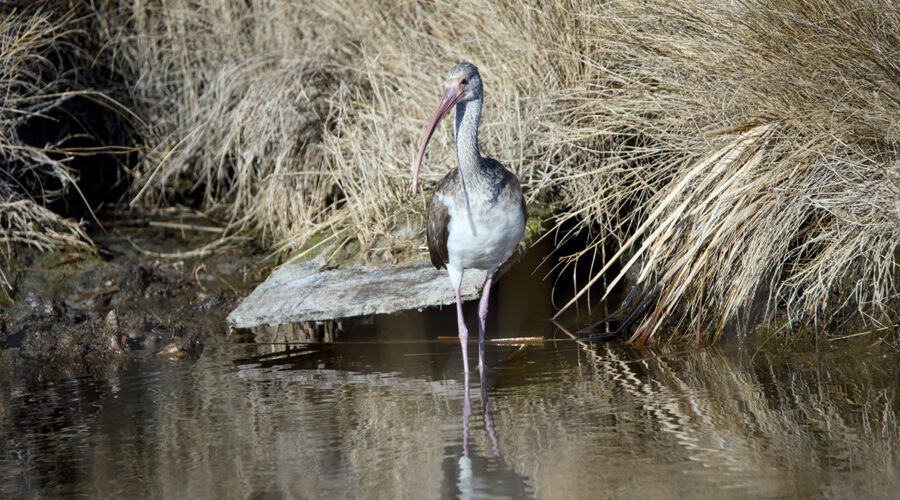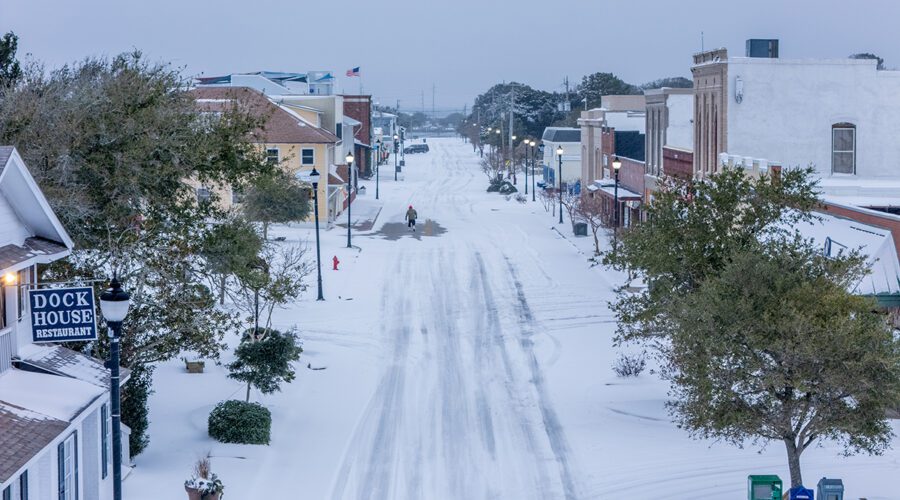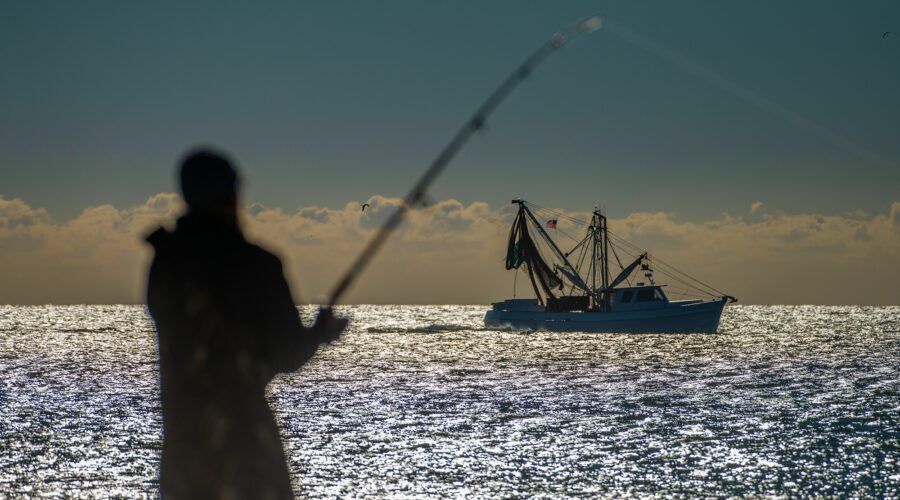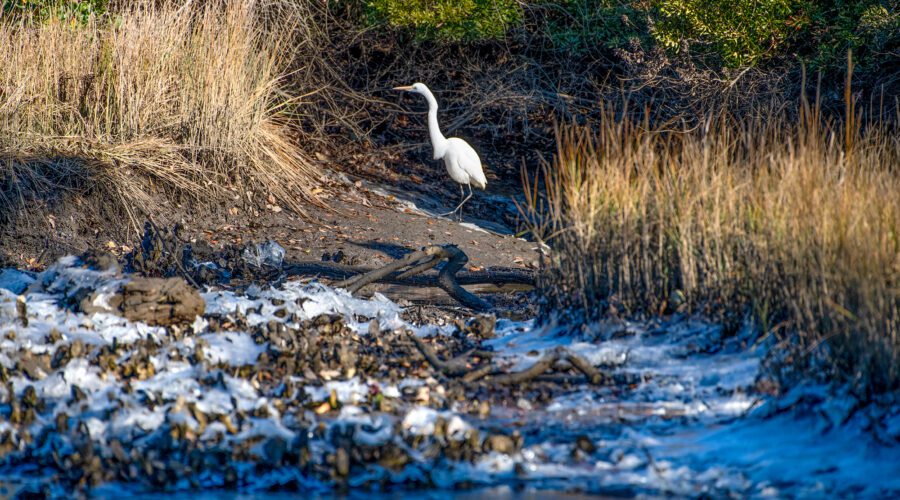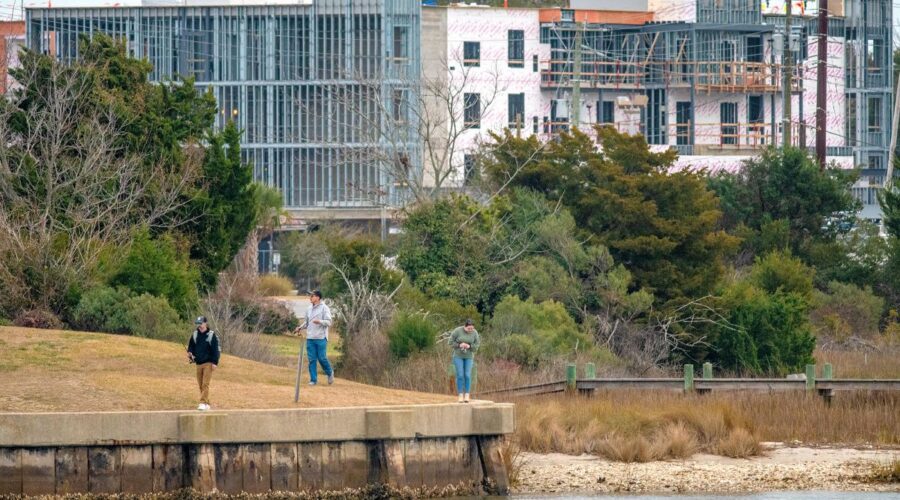A wall of sandbags extends along the roadside far into the distance aside N.C. Highway 12 on the north end of Ocracoke Island. This is where washouts and erosion from storm surge repeatedly chew away at the barrier island beach and roadway, part of the normal ocean dynamics that humans often try to control. Photo: Dylan Ray
Featured Photo
Wrong tern?
Least terns are excellent fish-catchers, and when feeding their young can deliver about two fish per hour. Males also catch and display fish during courting, which is what we assumed is going on here. There’s only one problem with that theory: After showing it to the female for a few seconds, when she finally showed interest, he flew away. Photo: William Birkemeier
Mom, cubs out for a stroll
A mother black bear and three cubs stroll along Creef Cut Wildlife Trail in Alligator River National Wildlife Refuge, located on the Albemarle Peninsula in eastern North Carolina. The U.S. Fish and Wildlife Service in a press release featuring the photo recommends staying at least 1,000 yards away from bears. Use binoculars, scopes and telephoto lens to get a better look. Check out BearWise, an online resource that offers practical tips in the event of a bear encounter. Photo: Karen Lebing, U.S. Fish and Wildlife Service
Sexy flex
An anole sends out a message to potential mates by flexing his throat to reveal a show of color in a Beaufort garden. Photo: Dylan Ray
Morning stretch
Daddy longlegs, scientifically speaking, a member of the Leiobunum genus, stretches its legs recently on the leaf of a sweetbay magnolia, or Magnolia virginiana, a native species on the North Carolina coast. Often called harvestmen — there are at least 6,600 suborders of the species — and mistakenly identified as spiders, the insect is an arachnid that has been found everywhere on Earth except Antarctica. Photo: Mark Hibbs
Coastal calf suns on a bed of flowers
A calf lies in a field of spring flowers near the Haystacks area of Morehead City in Carteret County. Photo: Dylan Ray
US 70 bridge inspection in progress, plan for daytime delays
A state Department of Transportation crew works high above the Newport River Tuesday inspecting the underside of the Morehead City-Beaufort high-rise bridge next to the state port. Traffic delays were expected through Friday on this part of U.S. Highway 70 as one lane of travel was planned during daylight hours, or 8 a.m. – 5:30 p.m. Photo: Dylan Ray
Boardwalk beneath the bridge
An angler recently tries his luck from beneath the Scuppernong River Bridge on the the Scuppernong River Boardwalk at the Pocosin Lakes National Wildlife Refuge visitor center in Columbia, in Tyrrell County. Money from the Bipartisan Infrastructure Law was appropriated to replace the boardwalk, a project that was announced to take place in fiscal 2026. Congress directly appropriated $455 million to the refuge over five years for programs related to the previous administration’s America the Beautiful initiative announced in 2021. The nonprofit National Wildlife Refuge Association has said that continuing resolutions, such as the emergency funding bill signed into law last week, throw refuges into chaos and uncertainty and can prevent new project starts. Photo: Mark Hibbs
Top job
Paint crews work high above the deck of the NC State Port of Morehead City Thursday as a new protective coating is applied to the water tower. Photo: Dylan Ray
Apart from the rest
A lone cypress stands apart from those closer to the shoreline at the old mill pond in Carteret County that was originally part of a tract owned by Welshman Robert Williams, who settled in Carteret County in 1763. Williams created the mill pond by having a dam built on Black Creek. A gristmill and a sawmill operated at each end of the dam, which is now below a bridge span on Mill Creek Road. Williams was also one of two county landowners whom historians say received money to build salt works in the county to assist in the Revolution. Photo: Dylan Ray
Not fog of war
Fog blankets the cannons Monday at Fort Macon State Park at the east end of Bogue Banks in Carteret County. Built during the decade after the War of 1812 to defend Beaufort Inlet, the fort was taken by Union forces early during the Civil War and was never again relinquished to the Confederates. Fort Macon is one of the state’s most visited parks, welcoming more than a million visitors annually. Photo: Dylan Ray
Just trying to blend in
An immature white ibis nearly blends into its surroundings as it forages just off a Bodie Island trail that ends at a series of creeks southwest of the lighthouse. Photo: Kip Tabb
Blanket of white falls overnight
Snow covers Front Street in Beaufort Wednesday morning as the winter storm continues to blanket Carteret County and much of coastal North Carolina. Photo: Dylan Ray
By land or by sea
Kevin Hardy of Wilmar, near Vanceboro, fishes along Cape Lookout National Seashore as a commercial fishing trawler offshore heads southwest. Photo: Dylan Ray
Icy conditions
An egret hunts along the shore of an icy marsh Thursday near Pelletier Creek in Morehead City. Don’t look for a quick thaw as much of coastal North Carolina is under a winter weather advisory from 4 p.m. Friday until 10 a.m. Saturday. The forecast calls for the potential for light accumulations of ice and snow, although little to none is expected from Hatteras Island to Ocracoke Island. Photo: Dylan Ray
Fine day for fishing
Visitors during a recent cloudy day carry fishing poles while strolling along the water’s edge at Cedar Street Park in downtown Beaufort, with the construction site of the 103-room Compass Hotel Beaufort by Margaritaville Resorts on Gallants Channel in the background. Photo: Dylan Ray

